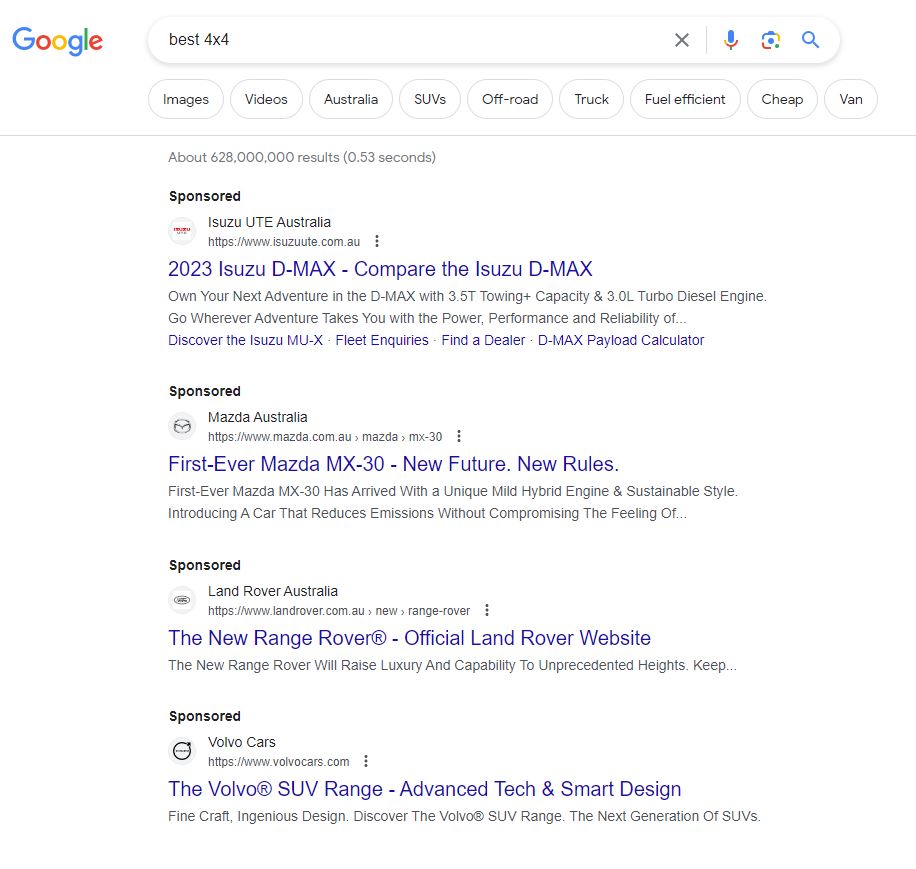Understanding Pay-Per-Click
“Reach your target audience and drive traffic to your website.”

'Sponsored' are Paid Adverts.
Example search.
Pay Per Click (PPC) is an online advertising model in which advertisers pay a fee each time their ad is clicked. It is a method of driving traffic to websites, where advertisers bid on keywords or target specific audiences, and their ads are displayed on search engine results pages (SERPs) or other online platforms. The most common PPC platform is Google Ads, but there are other popular platforms such as Bing Ads, Facebook Ads, and Twitter Ads.
What is a PPC Campaign?
In a PPC campaign, advertisers create ad campaigns and set a budget for how much they are willing to spend on clicks. They bid on keywords that are relevant to their products, services, or target audience. When someone searches for those keywords or matches the targeting criteria, the ads are displayed. The placement of the ads depends on various factors, including the bid amount, ad quality, and relevance.
When a user clicks on an ad, the advertiser is charged a certain amount, typically based on the bid amount and the ad rank of the competing advertisers. The cost per click (CPC) can vary widely depending on the competitiveness of the keywords and the industry.
PPC offers several benefits to advertisers. It provides immediate visibility and can drive targeted traffic to a website. Advertisers have control over their ad campaigns, including budget management, ad copy, targeting options, and tracking the performance of their ads. They can also track conversions and measure the return on investment (ROI) for their advertising spend.
To optimize PPC campaigns, advertisers often employ strategies such as keyword research, ad copy testing, landing page optimization, and continuous monitoring and optimization based on performance data. By refining their campaigns, advertisers can increase their click-through rates (CTRs), conversions, and overall campaign effectiveness.
Overall, PPC is a powerful and widely used advertising model that allows advertisers to reach their target audience, drive traffic to their websites, and achieve their marketing goals.
3 Key Steps
Automotive advertising is the art of creating compelling messages and visuals to showcase your products and motivate consumers to buy them.
Know your audience
Understanding your target audience is key to creating effective advertising. You need to know who your customers are, what they want, what motivates them, and where they spend their time. This information will help you create advertising that resonates with them and compels them to take action.
Create a clear message
Your advertising should have a clear and concise message that communicates the benefits of your product or service. Focus on the unique value proposition and highlight how it solves a problem or meets a need for your audience. Use simple and easy-to-understand language and avoid using jargon or technical terms that your audience might not understand.
Choose the right platform
There are numerous platforms available for advertising, including social media, search engines, and traditional media like TV and radio. Choose the platforms that are most relevant to your audience and where they are most likely to see or hear your message. Consider the demographics, interests, and behaviour of your target audience when deciding where to advertise. Create a website for potential customers to visit using basic SEO techniques that rate you higher. Additionally, monitor the performance of your ads regularly and adjust your strategy accordingly.